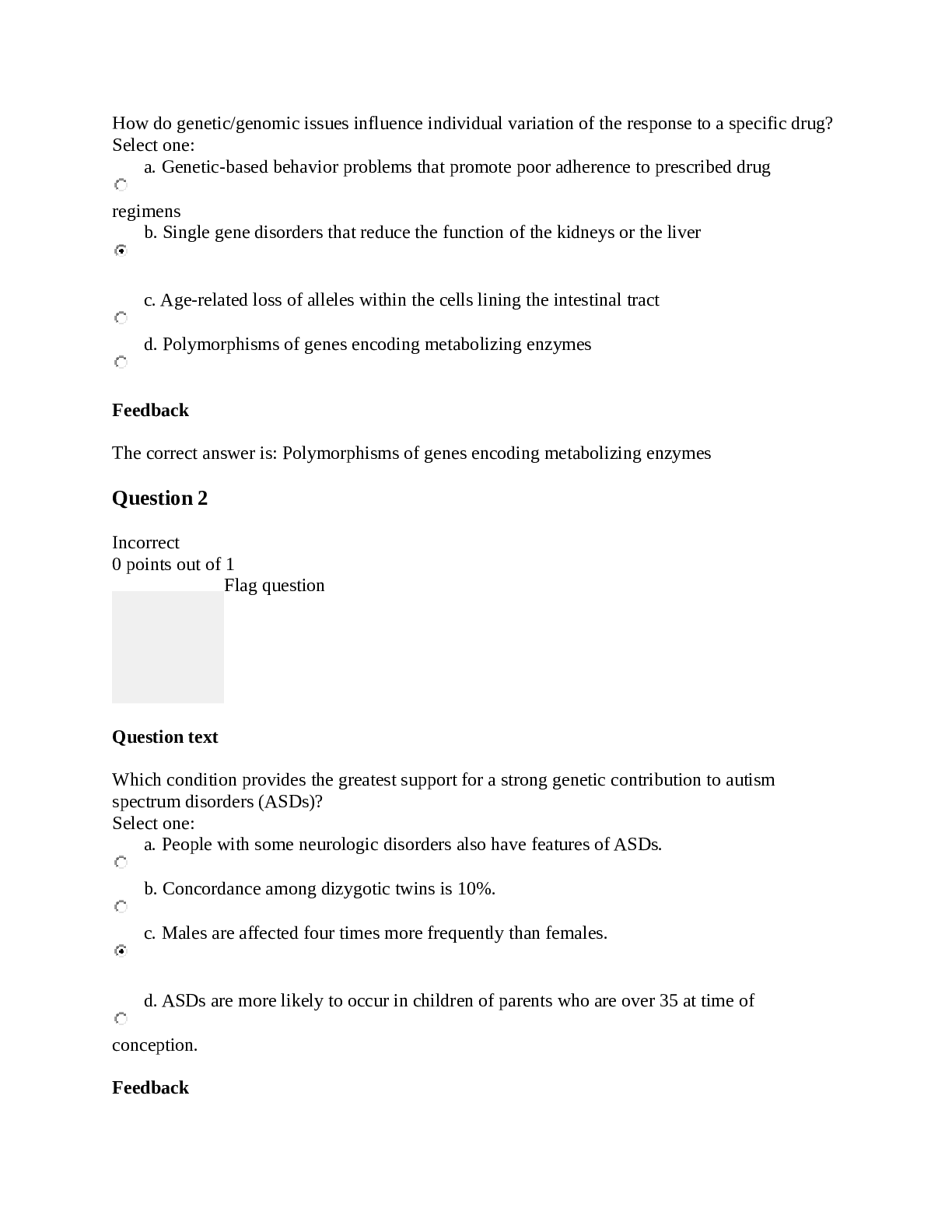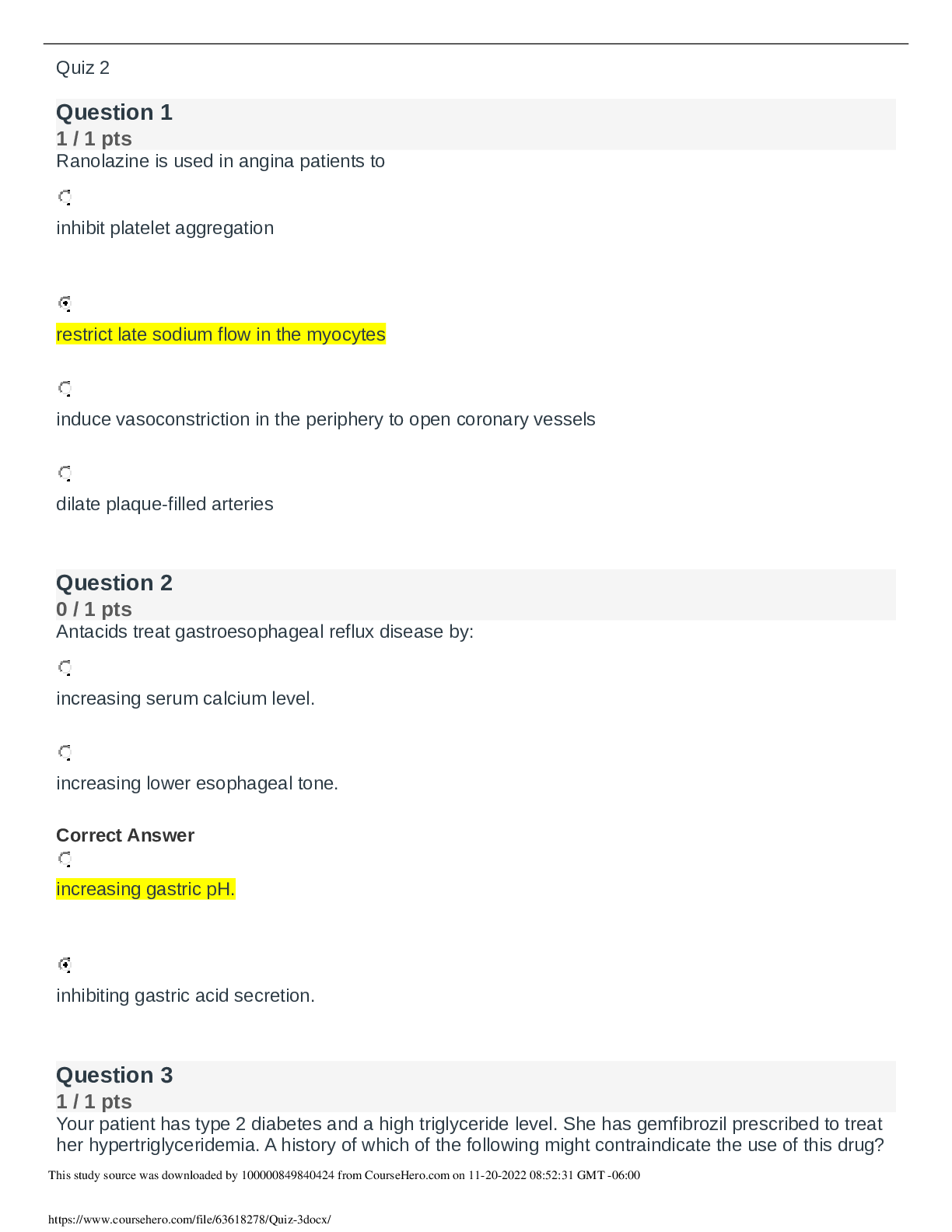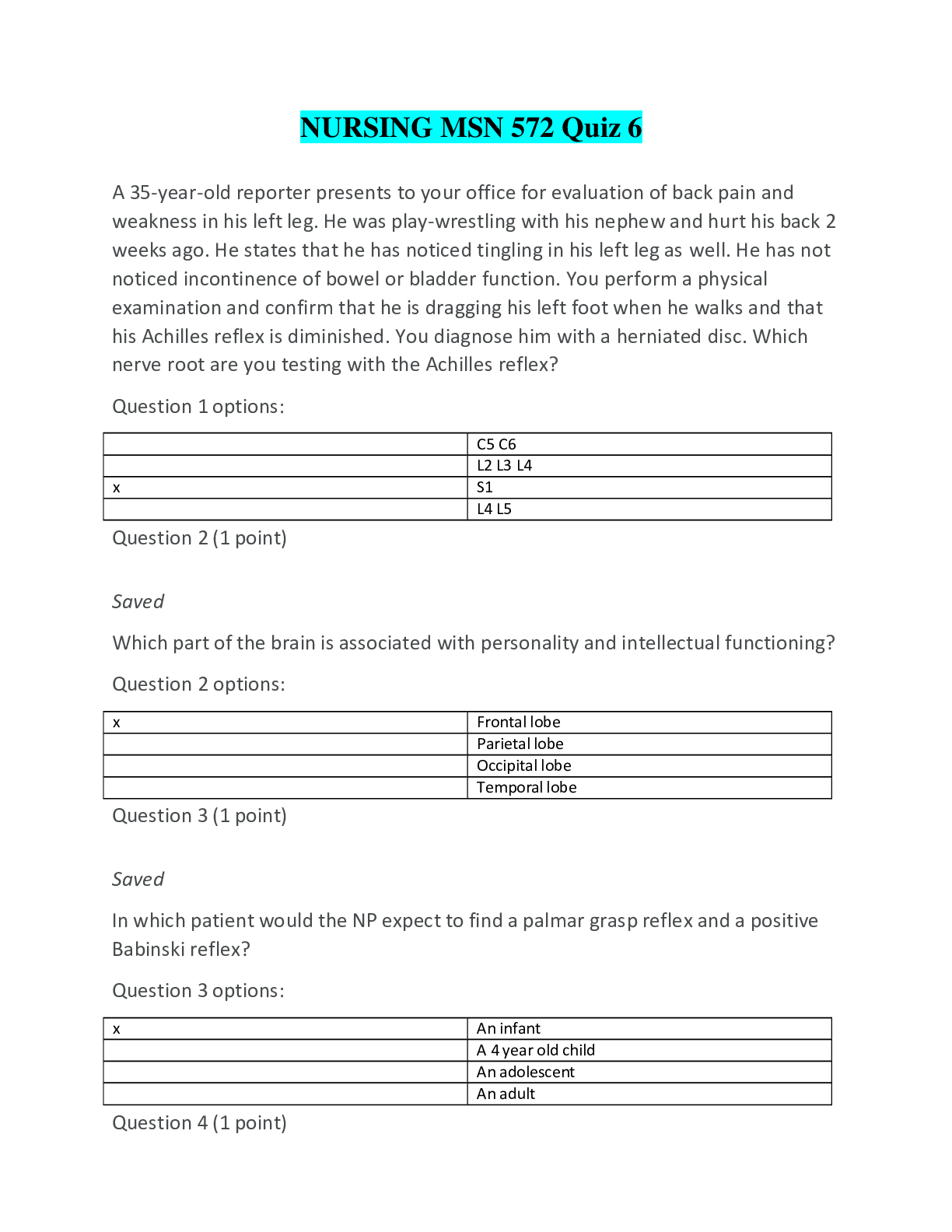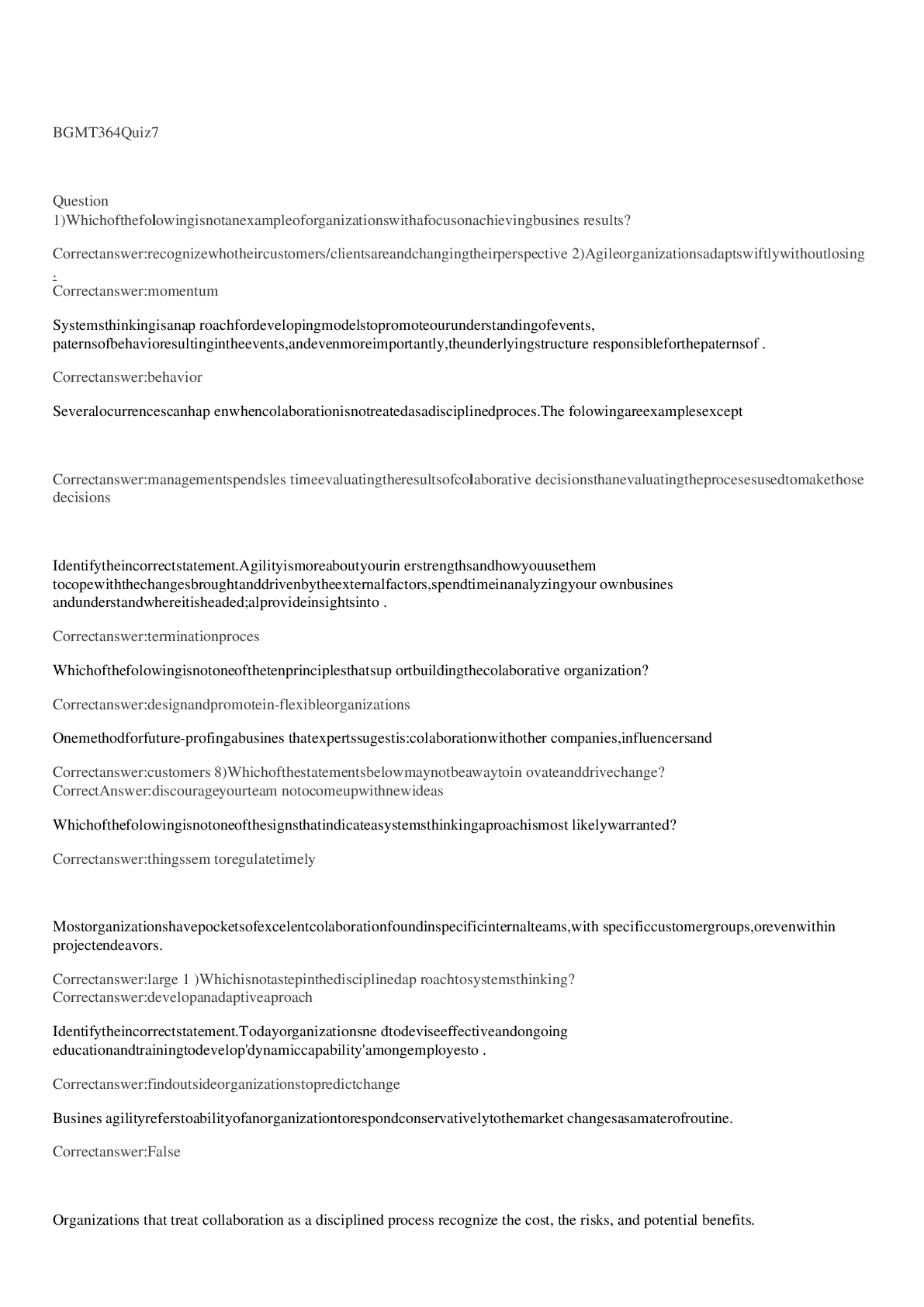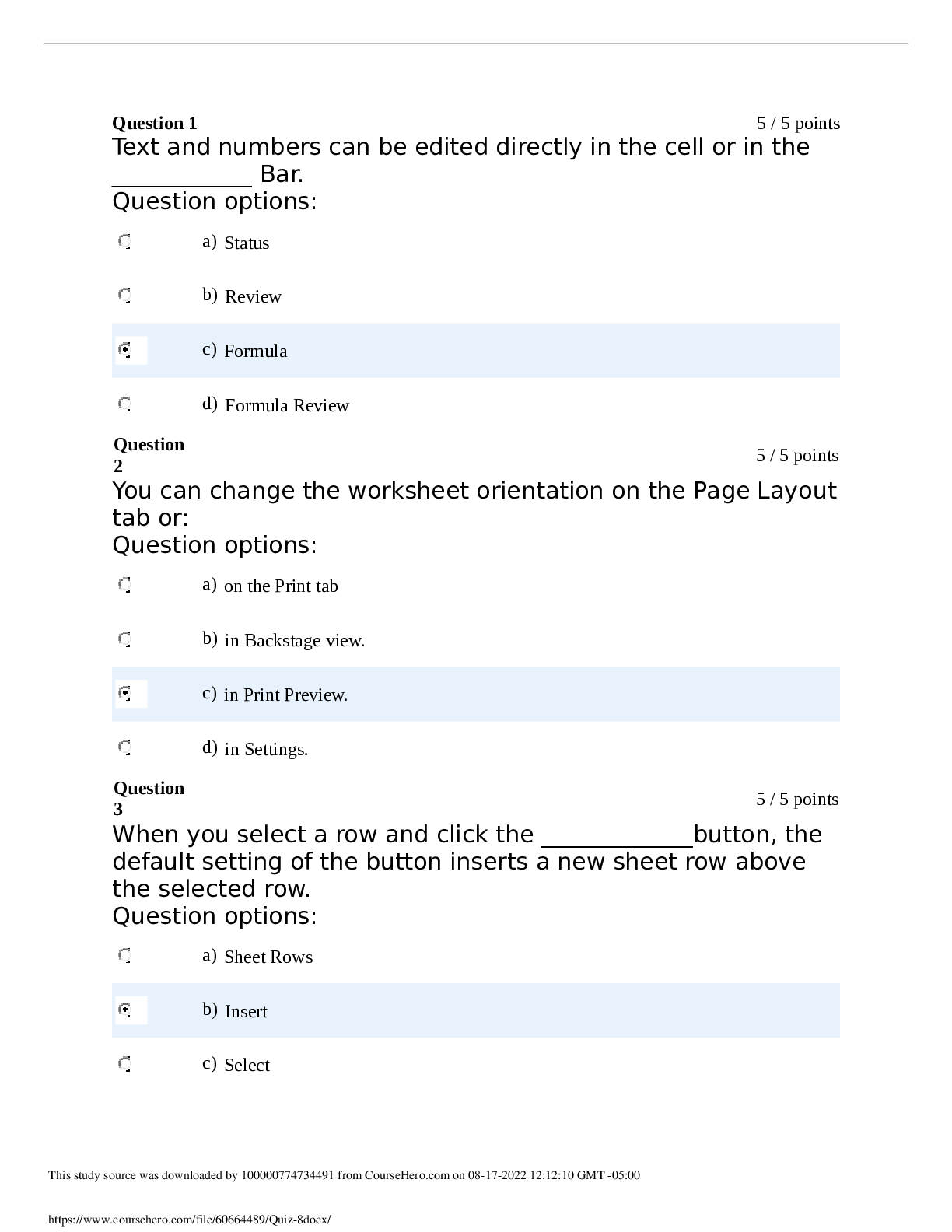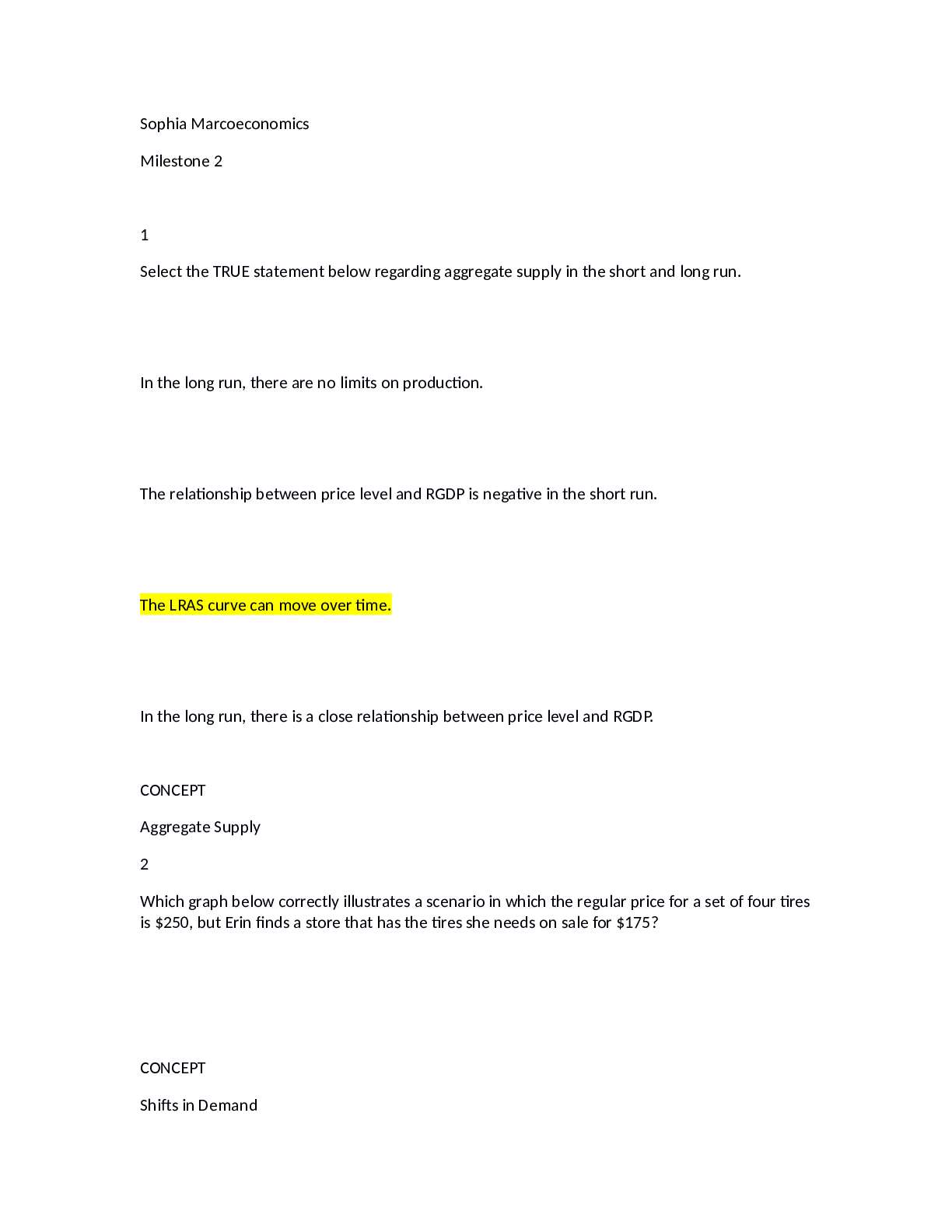*NURSING > QUESTIONS & ANSWERS > NBCOT Exam #3 Questions and Answers Already Passed (All)
NBCOT Exam #3 Questions and Answers Already Passed
Document Content and Description Below
NBCOT Exam #3 Questions and Answers Already Passed An OTR®; is developing a professional development plan. The OTR has identified personal needs for growth after completing a self-assessment. What... step should the OTR take NEXT in developing the professional development plan? A. Review progress toward current professional development goals and objectives. B. Determine available resources for meeting goals and objectives. C. Determine what learning needs to occur. D. Set new goals for professional development. ✔✔C: The steps in developing a professional development plan are to (1) reflect on current performance to date and determine learning needs on the basis of the self-assessment results; (2) review progress toward previous professional development goals; (3) ascertain what resources exist to meet identified professional development goals; (4) modify previous professional development goals and set new ones; (5) take action to meet professional development goals; and (6) document completed professional development activities. Thus, after identifying personal needs for growth by means of a self-assessment, the next step an OTR would take would be to determine what learning needs to occur. A: Step 2 in creating a professional development plan is to review progress toward current professional development goals. Progress toward current professional development goals and objectives cannot be assessed before learning needs have been identified. B: Step 3 in creating a professional development plan is to ascertain what resources exist to meet identified professional development goals. Learning needs must be determined before appropriate learning resources can be identified. D: Step 4 in creating a professional development plan is to modify previous professional development goals and set new ones. Goal setting cannot occur before professional learning needs have been determined. Which tool should the OTR® use to assess peripheral visual fields? A. Interview B. Amsler grid C. Snellen chart D. Confrontation testing ✔✔D: Confrontation testing provides a gross assessment of how much peripheral vision the client has. A: Although interview might be helpful in identifying the client's problems, it is not adequate to assess peripheral visual fields. B: The Amsler grid is used to assess central visual fields. C: The Snellen chart is used to assess visual acuity. An OTR® in an outpatient setting is treating a client who underwent repair of multiple flexor tendons in Zones 2 and 3 approximately 6 weeks ago. The dorsal blocking splint has been removed, and the client is beginning to actively move the digits. The client is eager to return to work as a carpenter, and the OTR is revising the goals with the client. Which goal for this time period is MOST appropriate? A. Increase passive wrist and digit composite extension to improve flexor tendon length B. Increase digital active range of motion to facilitate holding a washcloth during bathing C. Increase grip strength to maintain grasp on woodworking tools D. String 25 beads of various sizes and shapes to improve fine motor coordination ✔✔B: Setting realistic, meaningful goals and revising them as the client progresses is a critical component in treating traumatic injuries. At 6 weeks after operative tendon repair, the client may be ready for light, nonresistive functional activities that promote active flexion. A: Adding too much force at this stage may result in rupture of the repairs. C: At 6 weeks after repair of flexor tendons, strengthening is contraindicated. D: This goal has no functional component or intrinsic value to the client. For clients who have arthritis, which aspect of an occupational therapy intervention plan is the MOST crucial? A. Self-efficacy B. Splinting C. Compliance with the independent home exercise program D. Instruction in compensatory strategies for ADL management ✔✔A: Self-efficacy facilitates independent follow-through in the home context. The resulting confidence may ultimately lead to the desired behavior. B, C, D: Splinting, home exercise compliance, and ADL strategies all are important components of an intervention plan for clients with arthritis. Fostering self-efficacy, however, promotes the client's compliance with all aspects of the plan. Which setting is MOST effective for job coaching with an adult client with mental illness? A. Sheltered workshop environment B. Outpatient rehabilitation setting C. Program offering simulated work D. Workplace with assigned job duties ✔✔D: Support approaches with on-site training are recommended as the most effective setting for job coaching. A, B, C: Training for job placement in settings outside the workplace does not support generalization of skills to the workplace. An OTR® is reevaluating a client who has received six iontophoresis treatments within a 2-week period. The client reports there has been no change in symptoms compared to the day of the initial physical agent modality administration. What action should the OTR® take with regard to the iontophoresis based on the client's report? A. Discontinue the use of the iontophoresis until the physician is consulted. B. Continue to administer the iontophoresis for an additional 5-6 sessions. C. Obtain a prescription to increase the medication used in the electrodes. D. Increase the intensity of the electrical current used with the iontophoresis. ✔✔A: Iontophoresis treatment should be discontinued if the client has not reported at least 50% relief of symptoms. B: Iontophoresis treatment should be discontinued after four to six sessions if the client has not reported at least 50% relief of symptoms. C: Doubling the medication will have no effect on the impact of the iontophoresis treatment. D: Increasing the current may cause discomfort or a galvanic rash (an allergic reaction to the current); current should be set at a client's level of comfort to prevent skin irritation and burning. An outpatient has a medical history of having multiple transient ischemic attacks and is in the early stages of Alzheimer's disease. During an initial ADL assessment, the OTR® observes that the patient puts on eyeglasses upside down, attempts to stir before coffee is poured in a cup, and uses a spoon to cut meat. Based on these observations, which performance skill is MOST IMPORTANT to address as part of the intervention plan? A. Spatial relations B. Sequencing abilities C. Ideational praxis D. Body scheme awareness ✔✔C: Ideational praxis involves knowing which objects are used and how to use them to complete tasks. The observations in this scenario indicate the client has ideational apraxia. A: Spatial relations involves the ability to locate objects in relation to each other, and the client in this scenario is able to locate objects but misuses the objects for the intended purpose. B: Sequencing involves completing the steps of a task in the correct order, and the client does not consistently demonstrate a sequencing problem on the basis of the scenario. D: Body scheme awareness is the ability to locate parts of the body on self or others, and the client in this scenario is having difficulty interacting with objects to com [Show More]
Last updated: 1 year ago
Preview 1 out of 31 pages
.png)
Buy this document to get the full access instantly
Instant Download Access after purchase
Add to cartInstant download
We Accept:

Also available in bundle (1)
.png)
NBCOT BUNDLED EXAMS QUESTIONS AND ANSWERS 100% PASS
NBCOT BUNDLED EXAMS QUESTIONS AND ANSWERS 100% PASS
By Nutmegs 1 year ago
$16
18
Reviews( 0 )
$10.00
Document information
Connected school, study & course
About the document
Uploaded On
Sep 30, 2022
Number of pages
31
Written in
Additional information
This document has been written for:
Uploaded
Sep 30, 2022
Downloads
0
Views
90

.png)
.png)
.png)
.png)
.png)
.png)
.png)
.png)
.png)
.png)
.png)



